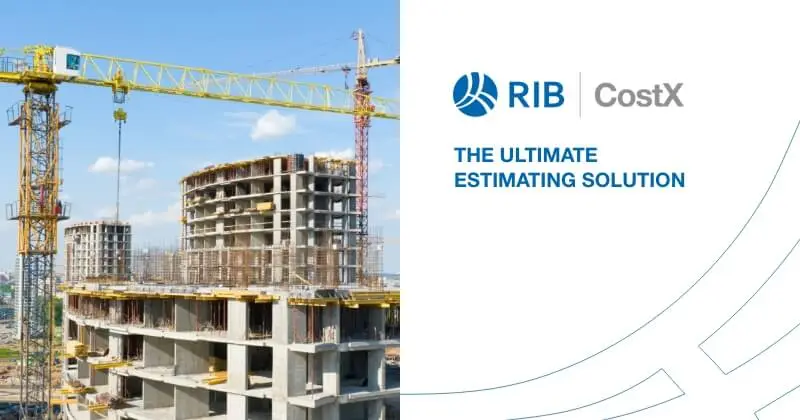11 mins read
Top 10 Construction Technology Trends Shaping 2025

The construction business is not new to innovation, but the pace of change in recent years has been nothing short of revolutionary. While certain digital construction technologies, like Building Information Modeling, virtual reality, and 3D printing have long been buzzwords, their capabilities are growing in ways that promise to transform how we design, construct, and manage buildings. 2025 isn’t about discovering new tools; it’s about using current ones in smarter, more powerful ways to meet the needs of a fast-changing environment.
From robots laying bricks with laser precision to drones recording real-time site data from the skies, and even virtual digital twins that replicate entire construction sites, these construction industry technology trends are no longer futuristic – they are the new reality. In this blog, we’ll look at the ten construction technology trends that are expected to dominate 2025, pushing efficiency, sustainability, and innovation across the sector. Get ready to see how these innovations are turning visions into structures, one digital tool at a time.
At RIB Software, we are committed to educating our users and readers about the latest developments in the industry. We recently discussed the top 10 construction industry trends for 2025. Today, we’ll be going through the top 10 technology trends that will shape the coming year and beyond. Let’s get started!

1. Advancements in Building Information Modeling (BIM)
First on our list of construction industry technology trends is Building Information Modeling (BIM). BIM has evolved well beyond its initial function as a 3D design tool, to become an important facilitator of efficiency and collaboration in construction. These days, 5D BIM supports the entire execution of a project, digitally representing every component to help builders make the most informed decisions. BIM construction management is an important cog in the construction machine, as it improves communication, increases efficiency, and supports efficient quantity takeoff and estimation processes from beginning to end (among other factors).
a) Enhanced Interoperability by 2025
By 2025, 5D BIM software is expected to have better interoperability so that teams can effortlessly collaborate across several platforms and technologies. The widespread use of standardized formats like Industry Foundation Classes (IFC) addresses current limitations like software system compatibility issues. These innovations are expected to accelerate the exchange of data among stakeholders, enhance coordination, and eliminate errors.
This is significant since, according to a McKinsey report, poor data interchange and misunderstanding account for $1.8 trillion in global construction waste each year. BIM’s potential for increased interoperability can play a major role in reducing this figure.
b) Integrating AI and IoT for Advanced Capabilities
The integration of artificial intelligence (AI) and the Internet of Things (IoT) into BIM systems is changing project management:
• Predictive Analytics. AI systems use historical and real-time data to predict delays, expenses, and equipment issues.
• BIM systems integrate IoT sensors embedded in construction equipment, materials, and buildings to monitor site conditions and equipment utilization, and ensure effective construction safety management in real-time.
c) Clash Detection and Cost Reduction
During the preconstruction phase, BIM’s conflict detection capacity is a critical tool. It identifies conflicts between architectural, structural, and Mechanical, Electrical, and Plumbing (MEP) systems before construction begins, dramatically reducing the risk of rework, delays, and cost overruns.
d) Industry-Wide Adoption and Benefits
According to Dodge Data & Analytics, 79% of construction specialists agree that BIM improves project outcomes. This figure is expected to rise as BIM advances further.
2. Augmented Reality for On-site Visualization
Another future construction technology is augmented reality (AR). This technology is transforming the industry by bridging the gap between digital planning and on-site execution. AR provides greater clarity and precision to construction processes by superimposing 3D models, plans, and project data on real-world environments.
a) Deeper Integration with Wearable Gadgets
By 2025, AR technology is expected to be smoothly linked with sophisticated wearable devices like smart helmets (e.g., the DAQRI Smart Helmet) and AR-enabled glasses like Microsoft HoloLens. These devices will enable workers and engineers to access critical information hands-free, improving safety and efficiency.
b) Real-time Comparison and Precision
Project managers can use AR technology to conduct real-time comparisons between current site conditions and planned designs. For example:
• AR technology identifies discrepancies between construction progress and virtual plans, allowing teams to swiftly adjust them.
• AR enhances coordination by presenting stakeholders with a shared virtual image of the project, enabling improved decision-making.
c) AR Beyond Visualization
AR is quickly evolving from just a visualization tool to a fully interactive construction resource:
• Automated Measurements. AR systems measure distances, areas, and volumes on-site and provide workers with immediate feedback.
• Integration with drones and IoT devices. AR-enabled drones can scan and overlay data, while IoT sensors supply real-time environmental data to AR systems.
3. Carbon-Estimating Technology
Next on our list of construction technology trends is carbon-estimating technology. These technologies (including sustainable construction software) provide practical insights into the carbon footprints of materials, processes, and building techniques, helping companies to accomplish sustainability goals more responsibly.
a) Real-time Environmental Impact Assessments
Carbon-estimating tools allow construction professionals to assess the environmental impact of their projects in real-time. This capacity ensures that sustainability issues are not an afterthought, but are included throughout the project’s lifecycle:
• The Embodied Carbon in Construction Calculator (EC3) enables users to compute and compare the embodied carbon of various components like concrete, steel, and insulation. By using materials with lower embodied carbon, companies could drastically minimize their projects’ environmental impact.
• Utilize advanced techniques to track both embodied and operational carbon emissions throughout a building’s lifespan, allowing for thorough lifecycle assessments (LCAs).
b) Integration of BIM platforms
The seamless integration of carbon-estimating technology with BIM systems is a game changer for sustainable construction. By 2025, these connections are projected to be commonplace, allowing for real-time carbon impact assessments throughout the design stage:
• Carbon tools combined with BIM allow for iterative design changes. Designers, for example, can compare various situations, such as the use of precast concrete vs steel frame, and choose the best sustainable option based on carbon footprint.
• Cloud-based 5D BIM solutions enables the real-time exchange of carbon data across stakeholders, including architects, engineers, contractors, and clients, encouraging collaboration toward sustainability goals.
c) Impact on Sustainable Construction
Implementing carbon-estimating technology is vital for lowering emissions in the construction sector, since building activities and materials manufacture account for 11% of global CO₂ emissions, according to a 2019 report by the International Energy Agency.
• Selecting materials with lower embodied carbon can significantly reduce a building’s overall carbon footprint. For example, substituting high-carbon materials with low-carbon alternatives has led to reductions in embodied carbon ranging from 19% to 46%, often with minimal cost premiums.
• Monitoring carbon emissions is critical for constructing energy-efficient buildings and meeting net-zero energy goals. According to RIB Software’s most recent sustainable construction report, the construction sector contributes around 40% of worldwide energy-related greenhouse gas emissions annually, with new construction accounting for 11% of this total.
RIB offers a valuable tool for reducing carbon emissions in construction. RIB CostX decreases carbon emissions by allowing for exact material takeoffs, including carbon data into estimates, and encouraging coordination for sustainable decision-making. Its seamless BIM integration and LCA assure that resources are used optimally and that companies adhere to carbon objectives. In short, it offers long-term environmental advantages without jeopardizing project budgets or efficiency.
4. Digital Twins
Digital twins are one of the new trends in construction technology that are revolutionizing the industry. This technology integrates real-time data from physical assets with advanced analytics, simulations, and visualization tools. This fusion produces a dynamic model that depicts the current state of a structure or system, enabling stakeholders to monitor, assess, and optimize operations.
For example, in a high-rise building with a digital twin, IoT sensors may send data about temperature, occupancy, and energy use to the digital model, allowing facilities managers to make real-time modifications to cut energy consumption and increase the comfort of the occupants in the building.
a) IoT Sensors and Real-Time Data Integration
By 2025, sensors will be more sophisticated, smaller, and cheaper, leading to widespread use in construction. These sensors gather critical data on:
• Monitoring stresses, loads, and vibrations to prevent failures and maintain structural integrity.
• Real-time energy monitoring identifies inefficiencies and optimizes use.
• Assessing environmental effects via CO₂ emissions and sustainability measures.
b) Improving Design Processes with Simulation Capabilities
Digital twins are transforming design processes by allowing architects and engineers to model and evaluate multiple scenarios before breaking ground. This capability reduces errors, cuts expenses, and improves overall design quality.
It goes beyond the building, though. Digital twins embrace the whole lifecycle of a structure: Facility managers may, for instance, use digital twins to optimize their real-time occupancy data for lighting and HVAC systems, and the digital twin of a structure could help with recycling and waste reduction during decommissioning.
5. Data Integration for Mixed Fleets
We know that managing diverse fleets of construction equipment is a major difficulty in the construction business, especially when it’s obtained from several manufacturers. Equipment design, telemetry systems, and data formats all vary, making it difficult to monitor performance, improve usage, and maintain the efficiency of operations. Enter data integration tools, a future construction technology that is transforming how companies handle this challenge by combining different data into a single, actionable presentation.
Data integration solutions bring together information from telematics devices, IoT sensors, and equipment records from many fleets to create a comprehensive view of operations. This ability is crucial to enhancing operations and decision-making.
By 2025, IoT devices and telematics systems are expected to play a key role in the integration of fleet data. These technologies allow for the following:
• IoT sensors installed in equipment provide real-time data on crucial aspects like fuel use, engine health, and GPS position.
• Predictive Maintenance: Telematics systems use machine learning (ML) algorithms to analyze equipment performance, detect potential issues, and plan proactive maintenance.
a) Predictive Analytics for Proactive Fleet Management
Predictive analytics is one of the most revolutionary aspects of integrated fleet data systems. These systems can examine both historical and real-time data to:
• Avoid equipment breakdowns by getting notifications for worn components or abnormal performance indicators, enabling managers to plan maintenance ahead of time.
• Optimize equipment utilization.
• Extend the working life of equipment by reducing wear and tear through proactive maintenance.
6. Automation and Robots in Construction
Automation and robotics are two construction industry technology trends that address major challenges, including labor shortages, safety concerns, and construction delays. These technologies use AI and ML to execute complex, labor-intensive, and dangerous jobs with unparalleled precision and speed.
a) Important Uses of Automation and Robots in Construction:
1. AI-powered Robots for Core Construction Tasks
By 2025, AI-powered robots are expected to perform a wide range of construction activities, including:
• Robotic technology, such as SAM100 (Semi-Automated Mason), can lay up to 3,000 bricks per day, far exceeding human output.
• Robots equipped with precise tools allow uniform concrete pouring, reducing waste and errors.
• Automated steel assembly increases accuracy and reduces labor costs.
These robots not only maintain a high standard, but they also perform well in environments that are challenging or risky for human workers.
2. Machine Learning for Predictive Maintenance
ML algorithms are changing how construction equipment and robots are maintained:
• Proactive Diagnostics. ML-enabled robots can detect performance issues and save downtime.
• Real-time self-calibration enables sophisticated robots to maintain operational efficiency.
Although there are still challenges surrounding the adoption of robotics (as this 2022 report by McKinsey shows), those who embrace this opportunity will most likely boost productivity, create stable supply chains, and experience strong revenues.
7. Cloud-based Construction Technology Solutions
Also on our list of construction technology trends is cloud-based construction software, which supplies dependable tools for project management, data storage, collaboration, and communication. As the construction industry digitizes, cloud-based systems become more important for managing complicated projects with teams distributed around the globe.
a) How Cloud Technology Impacts Construction
Construction software companies like RIB Software offer tools that centralize project management, enabling real-time collaboration and access to critical data from anywhere in the world. These platforms offer various advantages:
1.Centralized Collaboration
Teams can view updated schedules, budgets, and designs in real-time, ensuring that all stakeholders are on the same page.
2.Real-Time Communication
Cloud solutions enable efficient construction site communication between project managers, architects, contractors, and suppliers, reducing delays caused by misunderstandings.
3.Scalable Data Storage
The cloud enables construction companies to securely store massive amounts of project data, eliminating the need for on-site computers. Project schedules, budgets, and designs are all integrated into unified platforms, therefore streamlining processes throughout the construction process.
b) Key Features and Benefits of Cloud-Based Solutions
1. Improved cooperation among teams
Cloud solutions offer real-time collaboration amongst geographically distributed teams. For example:
• Construction architects can easily share amended drawings with contractors on-site.
• Real-time data allows construction managers to track progress and adjust schedules appropriately.
2. Streamlined Project Management
Cloud-based tools like RIB CX simplify project administration by integrating scheduling, budget monitoring, and document management.
3. Data Security and Scalability
Cloud providers spend heavily on data security, including encryption, multi-factor authentication, and periodic backups. This ensures that sensitive project information is protected. For instance, RIB Project is safeguarded in a NATO-certified cloud environment, which allows teams to confidently share information.
4. Cost Efficiency
Adopting cloud technology reduces the need for physical IT infrastructure and maintenance. According to a Deloitte analysis, cloud-based solutions could reduce IT expenses by 15-30%, making them an affordable choice for construction companies.
8. Drone Surveying and Monitoring
Drones have rapidly progressed from specialized tools to vital assets in the construction industry, changing the way sites are scanned, monitored, and inspected. These unmanned aerial vehicles (UAVs), packed with cameras, sensors, and AI, provide unmatched accuracy, efficiency, and safety for the industry. This is arguably one of the most exciting construction technology trends in the industry today.
a) Key Applications of Drones in Construction
1. Surveying and Mapping
Drones offer faster and cheaper alternatives to traditional surveying techniques:
• High-Resolution Aerial Mapping. Drones equipped with photogrammetry tools can create detailed 2D maps and 3D models of construction sites in hours, as opposed to days with human surveying.
• UAVs give precise topographic data, helping engineers to plan earthworks more effectively.
2. Progress Monitoring
Drones provide real-time information on project progress, enabling managers to identify delays or inefficiencies:
• Regular drone flights provide time-lapse videos of project milestones.
• Drone data is quickly being integrated into digital twin systems, providing real-time site conditions.
3. Safety Inspections
One of the most transformative applications of drones is safety checks. Drones can safely inspect high scaffolding and unstable buildings, reducing worker dangers. Meanwhile, AI-powered drones monitor video feeds for potential risks, like equipment problems and structural flaws.
b) Technological Advances in Drone Capabilities:
1. AI & Machine Learning
By 2025, drones will integrate AI and ML to provide more sophisticated functionalities. AI systems will evaluate drone-captured data to assess progress, identify abnormalities, and recommend remedial steps. AI-enabled drones will also be able to identify wear and damage to structures and perform preventative maintenance.
2. Enhanced Sensors
Drones are being equipped with sophisticated sensors to increase their capabilities. For instance, thermal imaging cameras can detect energy inefficiencies, pinpoint water leaks, and examine electrical systems.
3. Autonomous Flight
Autonomous drones eliminate the need for skilled operators. Drones could use established flight routes to get consistent data across vast areas, and advanced obstacle detection technologies provide safety and reliability in busy or challenging conditions.
9. 3D Printing for Construction
3D printing, also known as additive manufacturing, is one of the construction technology trends that is also transforming the construction industry. It allows for more efficient, cost-effective, and customized building procedures. Core advantages of 3D printing for construction include:
1. Speed and Efficiency
3D printing significantly reduces construction time by automating labor-intensive tasks:
• Rapid construction. Printing whole houses in 24 to 48 hours is quicker than traditional techniques which take weeks or months.
• Printers may be used for on-site building or prefabrication in plants, which improves logistics and assembly processes.
2. Cost Reduction
3D printing offers immense cost savings:
• Automation reduces labor costs by removing the need for large workforces and addressing labor shortages.
• Efficient material use. Precise material deposition reduces waste and expenses associated with extra material.
3. Design flexibility
Architects and engineers can use 3D printing to create intricate and one-of-a-kind designs that would be expensive or unfeasible using traditional techniques:
• Print one-of-a-kind, organic shapes without using molds or support systems.
• Customization. Structures may be tailored to particular needs, allowing for innovative approaches to design and urban planning.
4. Sustainability
3D printing is a more sustainable alternative to traditional construction procedures:
• Material efficiency. Compared to conventional procedures, additive manufacturing may cut waste by up to 60%.
• Researchers are developing eco-friendly sustainable construction materials like hempcrete and geopolymer concrete to reduce carbon footprints.
10. Virtual Reality for Training and Safety
Last on our list of construction industry technology trends is virtual Reality (VR). VR allows workers, managers, and stakeholders to simulate real-world construction scenarios, enhancing skills, safety, and efficiency across projects.
a) Key Uses of Virtual Reality in Construction
1. Workforce Training
VR provides an unmatched opportunity for worker training by recreating realistic building environments:
• Workers can practice operating heavy equipment like cranes and excavators in a virtual environment, which reduces the likelihood of errors during on-site training.
• VR simulations teach personnel how to react to disasters such as fires, building collapses, and hazardous material spills without putting themselves at risk.
2. Site Planning and Hazard Identification
Construction supervisors use VR to view site layouts and identify potential construction hazards before work begins:
• Virtual reality assists in preconstruction planning by allowing managers to virtually walk about the site, analyze procedures, and optimize layouts for efficiency.
• Simulating real-world settings allows managers to identify concerns, including trip hazards, equipment bottlenecks, and improper scaffolding arrangements.
3. Enhanced Team Collaboration
VR enhances communication and alignment among stakeholders by allowing them to experience projects in a virtual setting:
• Virtual walkthroughs. Architects, engineers, and clients can explore 3D models of projects in VR to better understand their design and functionality.
• Real-time feedback. Virtual meetings allow stakeholders to offer quick insight, reducing the possibility of misunderstandings.
As VR technology progresses, the industry will use this more extensively, encouraging creativity and efficiency in construction practices throughout the world.
Final Thoughts
As we approach the new year, it’s clear that the construction industry is at the forefront of technological advancement, with exciting new trends in construction technology. By 2025, the integration of the above-mentioned technologies will have resulted in a more connected and efficient sector, with improvements in project timing, pricing, and sustainability. As these construction technology trends develop, companies must stay nimble, adjusting their strategy to capitalize on new possibilities and tackle growing issues.
At RIB Software, our purpose is to empower your teams and change the way you plan, build, and manage projects. Explore our range of products to find a solution tailor-made to your unique needs and preferences. Start benefiting from state-of-the-art construction technology and get your free demo of RIB’s toolkit today!
Most Recent
11 mins read
4 mins read
23 mins read
8 mins read
Blog Categories

Ebook











